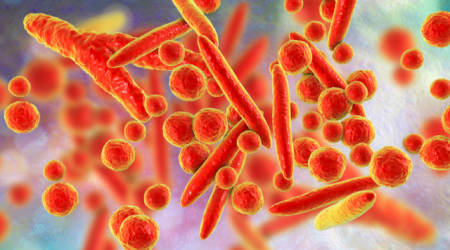
Types of Pneumonia: A Detailed Overview for Better Health Awareness
An annual respiratory illness known as pneumonia strikes millions of people globally. It is a serious and potentially life-threatening infection that can be caused by various microorganisms, resulting in different types of pneumonia. In this comprehensive guide, we will explore the various types of pneumonia, including bacterial pneumonia, viral pneumonia, mycoplasma pneumonia, and fungal pneumonia, to help you gain a better understanding of this condition and promote health awareness.
Bacterial Pneumonia
Bacterial pneumonia is one of the most common types of pneumonia and can be caused by a variety of bacteria, with Streptococcus pneumoniae being the most common culprit. It typically develops when bacteria invade the lungs and cause inflammation. Symptoms of bacterial pneumonia may include high fever, chills, chest pain, productive cough with green or yellow mucus, and shortness of breath.
Bacterial pneumonia can affect individuals of all ages but is more common in older adults, children, and those with weakened immune systems. It is crucial to seek medical attention promptly for proper diagnosis and treatment, as bacterial pneumonia can lead to severe complications without proper care.
Viral Pneumonia
Viral pneumonia is caused by various viruses, such as influenza, respiratory syncytial virus (RSV), and the coronavirus. Unlike bacterial pneumonia, viral pneumonia tends to have a milder onset but can still be dangerous, especially in vulnerable populations. It often starts as a respiratory tract infection and can progress to pneumonia if the virus reaches the lungs.
The symptoms of viral pneumonia are similar to those of bacterial pneumonia and may include cough, fever, shortness of breath, fatigue, and muscle aches. Vaccination and good hygiene practices can help reduce the risk of viral pneumonia, especially during flu season.


Mycoplasma Pneumonia
Mycoplasma pneumonia, also known as atypical pneumonia, is caused by the bacterium Mycoplasma pneumoniae. This type of pneumonia tends to have a gradual onset and is typically less severe than bacterial pneumonia. Mycoplasma pneumonia is often referred to as “walking pneumonia” because people with the infection can usually carry on with their daily activities despite feeling unwell.
Common symptoms of mycoplasma pneumonia include a persistent cough, sore throat, fatigue, and mild fever. It is more prevalent in younger individuals, but anyone can contract it. Treatment for mycoplasma pneumonia usually involves antibiotics, and it is essential to complete the full course of treatment to prevent a recurrence.
Fungal Pneumonia
Fungal pneumonia is a less common but potentially serious type of pneumonia caused by various types of fungi, such as Aspergillus and Pneumocystis jirovecii. It typically affects individuals with weakened immune systems, such as those with HIV/AIDS, cancer, or organ transplants.
Symptoms of fungal pneumonia can be similar to other types of pneumonia, including cough, shortness of breath, and fever. However, fungal pneumonia can be more challenging to diagnose and treat, and the prognosis may be less favorable for those with compromised immune systems. Proper antifungal medication is crucial for effective treatment.

Preventing Pneumonia
Prevention is always better than cure, and there are several steps you can take to reduce your risk of contracting pneumonia, regardless of the type:
- Vaccination: Getting vaccinated against common pathogens that cause pneumonia, such as the flu and Streptococcus pneumoniae, can significantly reduce your risk.
- Good Hygiene: Practicing good hygiene, such as frequent handwashing and avoiding close contact with sick individuals, can help prevent the spread of viruses and bacteria.
- Healthy Lifestyle: Maintaining a healthy lifestyle with a balanced diet, regular exercise, and adequate sleep can strengthen your immune system, making you less susceptible to infections
- Smoking Cessation: Quitting smoking is crucial in preventing pneumonia, as smoking damages the lungs and weakens the body’s defenses against infections.
- Immunization: For those with weakened immune systems, taking additional precautions and staying up to date with immunizations is essential.
Conclusion:
Pneumonia is a respiratory infection that comes in various forms, including bacterial pneumonia, viral pneumonia, mycoplasma pneumonia, and fungal pneumonia. Each type has its unique characteristics and requires different approaches to diagnosis and treatment. Understanding the distinctions between these pneumonia types can lead to better health awareness and help individuals take steps to prevent and manage this condition.
